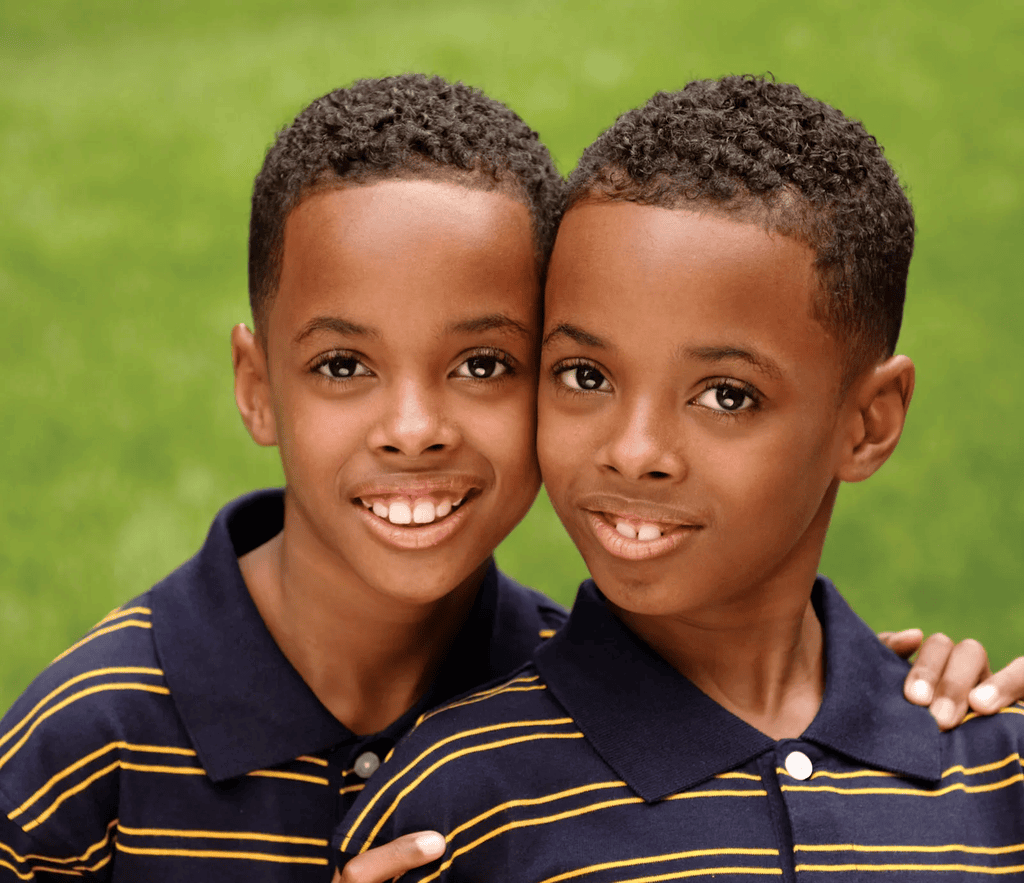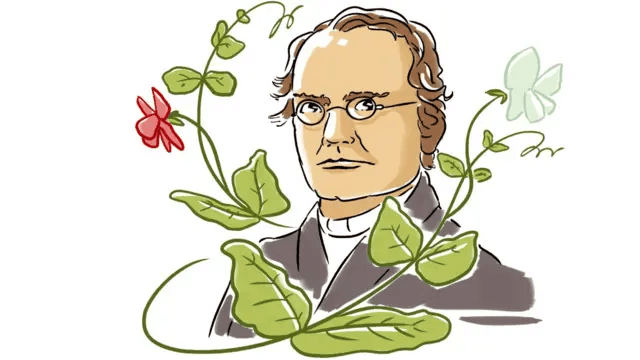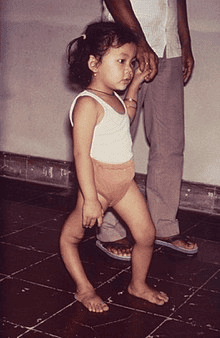Like Father, Like Daughter Class 5 Worksheet EVS Chapter 21
| Table of contents |

|
| Q1: Fill in the Blanks. |

|
| Q2: True or False |

|
| Q.3. Match the Following: |

|
| Q4: Short Answer Type Questions |

|
| Q5: Long Answer Type Questions |

|
Q1: Fill in the Blanks.
(i) The color of our eyes is __________ from our parents.Ans: The color of our eyes is inherited from our parents.
 View Answer
View Answer 
This means the color of our eyes comes from our parents, passed down through genes.
 Our eyes are inherited from our parents
Our eyes are inherited from our parents
(ii) An __________ child does not resemble the people who bring him up.
Ans: An adopted child does not resemble the people who bring him up.
 View Answer
View Answer 
An adopted child is one who is raised by parents different from their biological ones.
(iii) __________ twins look exactly alike.
Ans: Identical twins look exactly alike.
 View Answer
View Answer 
Identical twins are born at the same time from the same mother and share the same looks.
 Identical Twins
Identical Twins
(iv) Children brought up in the __________ environment behave in a similar way.
Ans: Children brought up in the same environment behave in a similar way.
 View Answer
View Answer 
When children grow up in similar surroundings, they may behave similarly.
(v) __________ are affected when a person suffers from polio.
Ans: Legs are affected when a person suffers from polio.
 View Answer
View Answer 
Polio mainly affects a person’s legs, making it hard to walk.
(vi) _______________ explained hereditary of characters using pea plants.
Ans: Gregor Mendel explained hereditary characters using pea plants.
 View Answer
View Answer 
Gregor Mendel was a scientist who studied how traits are passed from parents to children using pea plants.
(vii) Saroja and Suvasini are __________.
Ans: Saroja and Suvasini are twins.
 View Answer
View Answer 
Twins are two children born at the same time to the same mother.
(viii) Polio is caused by __________.
Ans: Polio is caused by a virus.
 View Answer
View Answer 
Polio is an illness caused by a virus that affects muscles, especially in the legs.
 Polio Virus
Polio Virus
(ix) Some habits we get from our family, some skills we pick up from our __________.
Ans: Some habits we get from our family, some skills we pick up from our environment.
 View Answer
View Answer 
We learn some behaviors from our family and others from the people around us or the place we live.
(x) Ashima's parents were sorting out vegetables in the _____.
Ans: Ashima's parents were sorting out vegetables in the kitchen.
 View Answer
View Answer 
This means Ashima’s parents were working together in the kitchen.
Q2: True or False
(i) Ashima's sneezing is similar to her mother's.Ans: False
 View Answer
View Answer 
Ashima’s sneeze sounded just like her father's
(ii) Nilima's hair is like her mother's.
Ans: False
 View Answer
View Answer 
Nilima’s hair is different from her mother’s.
(iii) Saroja and Suvasini are identical twins.
Ans: True
 View Answer
View Answer 
Saroja and Suvasini are identical twins and look the same.
(iv) Saroja and Suvasini have different hobbies.
Ans: True
 View Answer
View Answer 
Though they look alike, they have different interests.
(v) Mendel's experiments with peas led to the discovery of traits coming in pairs.
Ans: True
 View Answer
View Answer 
True. Mendel found that traits are passed in pairs, one from each parent.
 Gregor Mendel
Gregor Mendel
Q.3. Match the Following:

Solution:
Saroja - D. Grew up in a musical environment in Pune
Saroja grew up with a musical background, playing different instruments.Suvasini - C. Grew up with a karate coach in Chennai
Suvasini was raised by her father, who was a karate coach in Chennai.Gregor Mendel - A. Scientist who studied pea plants
Gregor Mendel is known as the father of genetics for his experiments with pea plants.Polio - B. Can cause muscle weakness and paralysis
Polio is a disease that can lead to muscle weakness and sometimes paralysis.Pulse Polio Program - E. Vaccination program to prevent polio
The Pulse Polio Program is a government initiative aimed at eradicating polio through vaccination.
 Polio
Polio
Q4: Short Answer Type Questions
(i) Whose habits and characteristics do we take?
We get our habits and characteristics from our family.
(ii) Who are identical twins?
Identical twins are children born from the same mother at the same time and look exactly alike.
(iii) Who is an adopted child?
An adopted child is one who is not born to the parents but is raised by them.
(iv) Which part of the body will be affected by polio? Is this hereditary?
Polio affects the legs, and it is not hereditary, meaning it doesn’t pass from parents to children.
(v) What is pulse polio?
Pulse Polio is a campaign in India to give children vaccines to prevent polio.
 Pulse Polio
Pulse Polio
(vi) Name two characteristics that a person inherits.
A person inherits their height and hair color from their parents.
(vii) Will two sisters brought up in different environments behave in a similar way?
No, two sisters raised in different environments may behave differently.
(viii) What is similar between Saroja and Suvasini?
Saroja and Suvasini are identical twins, so they look the same, but they have different interests and hobbies.
(ix) Why did Ashima's mother think someone else sneezed when Ashima sneezed?
Ashima's mother believed someone else sneezed because Ashima's sneeze sounded exactly like her father's. The similarity made her mother think it was her father who sneezed.
(x) Why does Nilima's mama get confused when she sees Saroja and Suvasini together?
Nilima’s mama gets confused because Saroja and Suvasini look very similar, as they are identical twins.
Q5: Long Answer Type Questions
(i) What is the difference between Saroja and Suvasini?
- Although they look alike, their abilities and backgrounds are different.
- Saroja is fluent in Tamil and Marathi, while Suvasini does not know these languages.
- Saroja is good at singing, but Suvasini is not skilled in singing.
- Saroja was adopted by her aunt and raised in a musical environment in Pune.
- Suvasini stayed with her father, a karate coach, in Chennai.
(ii) What did Gregor Mendel find about the pea plant?
- Gregor Mendel conducted experiments on pea plants for seven years.
- He discovered the basic rules of inheritance.
- He found that traits in pea plants come in pairs, like the seeds being either rough or smooth, or yellow or green.
- These traits are passed down to the next generation of plants as dominant or recessive traits.
- Mendel’s experiments showed that the characteristics of the pea plants (like color or texture) don’t mix but stay separate in future generations.
(iii) What is polio? How can it be prevented?
- Polio is a disease caused by a virus that can cause muscle weakness and sometimes lead to paralysis.
- It spreads from person to person and can affect people of all ages, especially children.
- Polio can be prevented through vaccination.
- The "Pulse Polio" program helps vaccinate children to protect them from polio.
|
37 videos|244 docs|41 tests
|
FAQs on Like Father, Like Daughter Class 5 Worksheet EVS Chapter 21
| 1. What is the main theme of "Like Father, Like Daughter"? |  |
| 2. How do the characters in the story demonstrate their relationship? |  |
| 3. What lessons can be learned from the story? |  |
| 4. How does the author portray the father's influence on his daughter? |  |
| 5. In what ways does the title "Like Father, Like Daughter" reflect the storyline? |  |
















